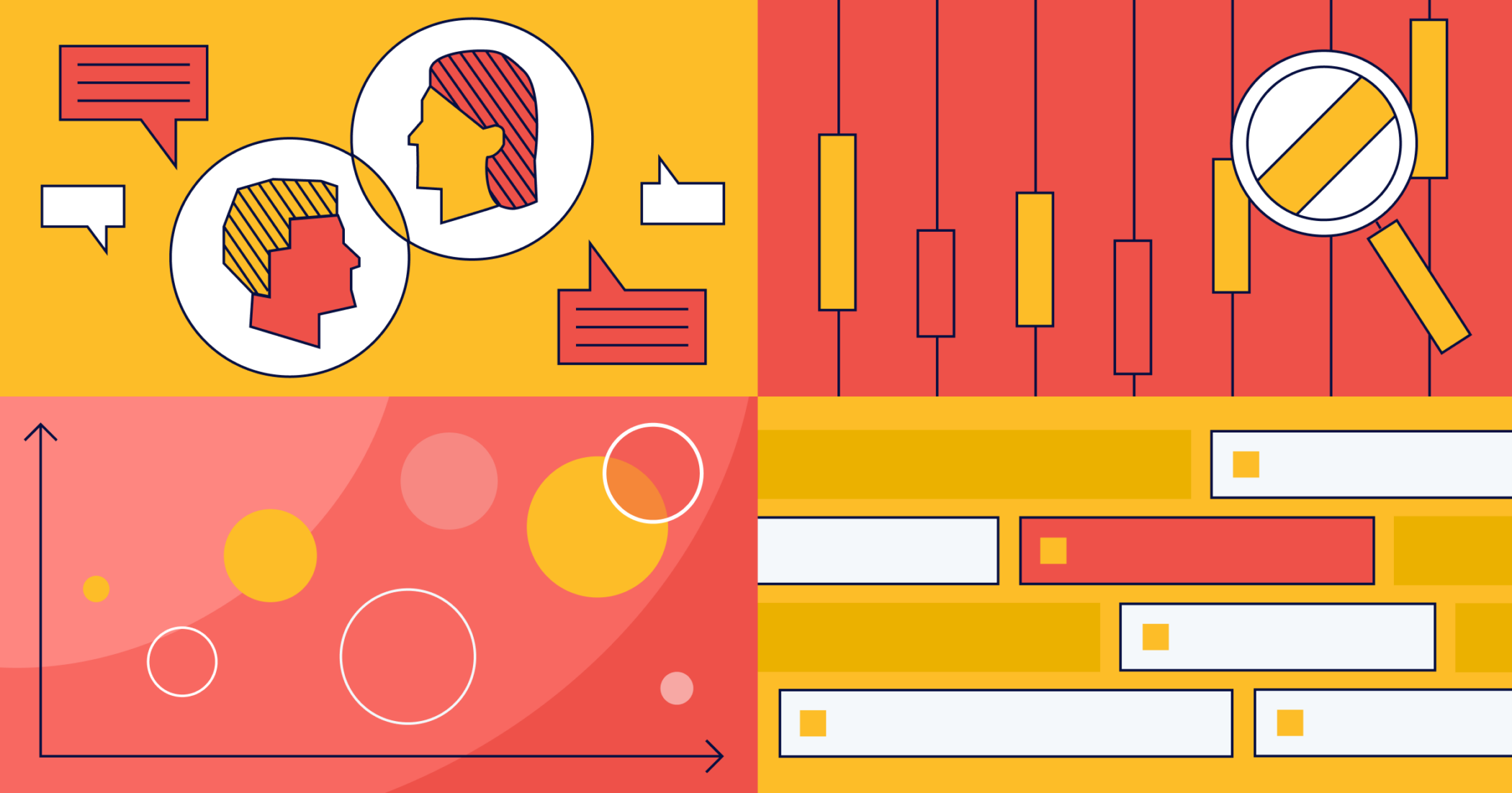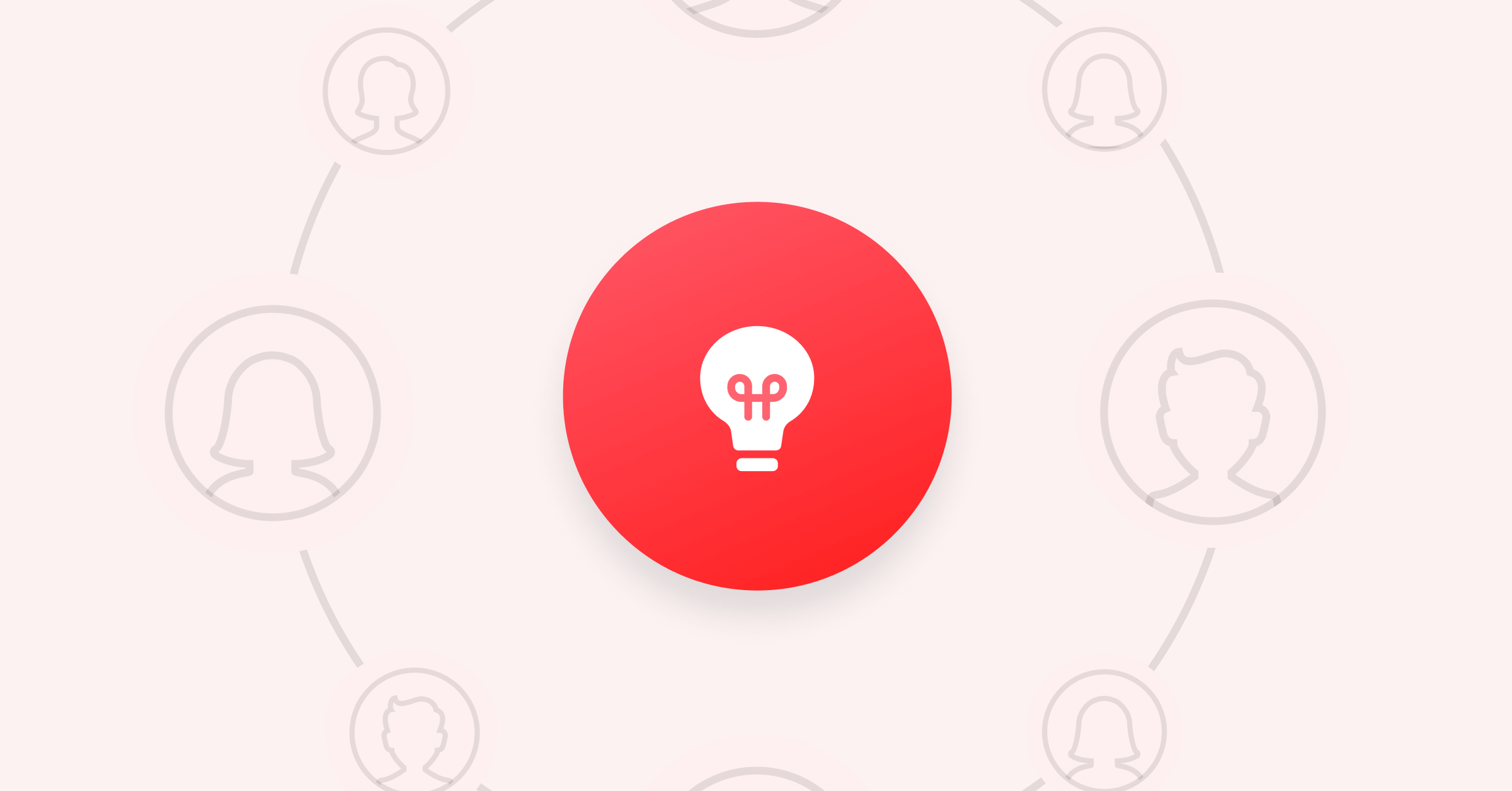Top Product Discovery Techniques

Product discovery techniques are used by product teams to understand user needs, market demands, and technological feasibility before building a product. These techniques can include user interviews, surveys, market research, prototyping, and usability testing, among others. They are crucial in the product development process because they enable teams to gather insights early on, ensuring that the product being developed addresses genuine user needs and aligns with market trends.
By employing the following techniques, teams can minimize the risk of building a product that fails to resonate with users or lacks viability in the market, ultimately increasing the chances of delivering successful and impactful solutions. Additionally, product discovery techniques foster a culture of continuous learning and iteration, allowing teams to adapt their approach based on new insights and changing circumstances throughout the development cycle.
User-Centric: What Do the Users Want?
User-centric product discovery techniques focus on understanding the needs, preferences, and behaviors of the people buying and using your product. To create satisfying experiences and mitigate the risk of flopped feature launches, your products must be developed with a deep understanding of the users they are intended for.
User Research
This can be done via methods such as direct customer interviews, surveys, and even observation to gather insights directly from users. By conducting user research, product teams can gain a better understanding of their motivations, pain points, and goals, which serves as the foundation for informed decision-making throughout the product development process.
Identify and Create User Personas
Creating user personas involves synthesizing the data collected from user research into fictional representations of typical users, helping to humanize and contextualize the target audience. These personas encapsulate demographic information, behaviors, motivations, and goals, guiding product teams in designing solutions tailored to specific user segments.
Map the User Journey
This requires visualizing the steps users take to accomplish their goals, from initial awareness through product adoption and beyond. This technique helps teams identify key touchpoints, pain points, and opportunities for improvement within the user experience, facilitating the design of intuitive and user-friendly products that meet users’ needs effectively.
Competitor Analysis: What Are Your Competitors Doing?
Competitor analysis is the examination of what other companies in the same market space are doing to see how you compare. Overall, scrutinizing your key competitors’ strengths and weaknesses—and seeing how you rank among them and what your differentiating factor is—is an essential process for positioning products effectively within the market.
How to Approach Market Research
Market research serves as the foundation of competitor analysis, when you should be collecting data on industry trends, market size, and customer demographics. These trends will be dictated by not just potential customers but your current users as well, only emphasizing the need for user-centric product discovery techniques. Understanding the broader market landscape helps product teams identify opportunities and threats to inform strategic decision-making.
It’s important to remember during this phase to not ask leading questions; let customers of competitive products and your current users tell you what they are seeing in the industry, not the other way around. Market research can be split up into two parts: Competitor analysis and market gap analysis.
Competitor Analysis Techniques
Competitor analysis techniques involve systematically gathering information about competitors’ products, strategies, strengths, and weaknesses. This may include analyzing their marketing tactics, pricing strategies, product features, and customer feedback. A common technique is SWOT analysis, where you identify and analyze their internal Strengths and Weaknesses alongside the external market Opportunities and Threats that they are facing.
By benchmarking against competitors, product teams can gain valuable insights into industry best practices and areas where they can differentiate their own product.
Market Gap Analysis
Market gap analysis involves identifying unmet needs (or “gaps”) within the market that competitors have not addressed adequately. This process entails examining customer feedback, conducting surveys, and analyzing market trends to pinpoint areas where there is potential for innovation or disruption. By identifying market gaps, product teams can tailor their product strategy to capitalize on untapped opportunities and gain a competitive edge.
Ideation Workshops: Brainstorming Time
These workshops are centered around generating and refining ideas through collaborative brainstorming sessions. Ideation workshops are essential for sparking creativity, generating diverse perspectives, and identifying promising ideas to drive the product development process forward.
Brainstorming Methods
Brainstorming methods involve techniques like mind mapping or role-playing exercises to encourage creative thinking and idea generation within a group setting. These sessions often leverage diverse perspectives and expertise from team members to explore a wide range of potential solutions to a given problem or opportunity.
Idea Prioritization Tips
Prioritizing ideas helps teams really focus on what will have the most positive business impact.
Tip 1: Assess feasibility. Discern whether your engineers can build what is required with the time, skills, and technology you currently have.
Tip 2: Determine customer impact: Ensure that the ideas you prioritize ultimately align with a trending user need. This recommendation cannot be ignored, as the product discovery process is all about building features your customers will want to use.
Tip 3: Know the triggers for different methods. There are seven ways you can prioritize feature ideas based on data. Here are some indicators for when to choose which:
- Value vs. Complexity Quadrant: You’re working on a new product, building an MVP, or when development resources are scarce
- Weighted Scoring Prioritization: You’re considering a long list of feature drivers and product initiatives
- The RICE framework: You need an objective scoring system that has been proved instead of developing one from scratch
- The Kano Model: You need to make better decisions for product improvements and add-ons
- ICE Scoring Model: You’re just starting (or need to exercise the discipline of) prioritization in your team
- The MoSCoW method: You need to communicate what needs to be included (or excluded) in a feature release
- Opportunity Scoring: You’re seeking innovative ways to improve existing solutions
Tip 4: Just get going, then iterate. You may be torn between two or three frameworks. The important thing is to just get started, so pick one and then adjust over time (or choose a new method) if necessary.
Design Sprints
Design sprints, popularized by Jake Knapp at Google Ventures, are timed workshops that compress the product development process into a series of structured activities over a few days. Design sprints typically involve activities such as problem framing, ideation, prototyping, and testing, culminating in validated concepts ready for further development. These workshops foster collaboration, accelerate decision-making, and enable teams to quickly iterate and validate ideas, ultimately leading to more innovative and user-centric solutions.
Prototyping and Testing: Getting Validation
This product discovery method involves creating tangible representations of product ideas, testing them with users, and validating their viability in the market before investing significant resources in full-scale development. This is an essential step for mitigating risks, confirming assumptions, and ensuring that the final product meets user needs effectively. By iteratively testing and refining product concepts, teams can increase the likelihood of developing successful and impactful solutions—before wasting time and money on a final product with a lot of flaws.
Building Rapid Prototypes
Building rapid prototypes allows product teams to quickly bring ideas to life using low-fidelity mock-ups or prototypes. These prototypes can take various forms, such as paper prototypes, digital wireframes, or interactive mock-ups, depending on the complexity of the product idea and the stage of development. Rapid prototyping enables teams to iterate quickly, gather feedback early, and refine concepts based on user input.
Minimum Viable Product Testing
Minimum Viable Product (MVP) testing involves creating a simplified version of the product with only essential features and functionality, which is then tested with real users. MVP testing allows teams to validate assumptions, gather real-world feedback, and identify areas for improvement before scaling up development efforts.
Usability Testing
Usability testing lets product teams observe users as they interact with prototypes or MVPs to identify user experience (UX) issues, pain points, and areas of confusion. This can be done through moderated or unmoderated testing sessions, where participants are asked to complete specific tasks or scenarios while providing feedback on their experience. Usability testing helps teams uncover issues early in the development process, ensuring that the final product is intuitive and user-friendly.
Iterative Improvement: Refine Your Product
This final product discovery technique focuses on continuously refining and enhancing the product based on user feedback, data analysis, and insights gathered throughout the development process. The product isn’t “done” once a feature has been launched. Iterative improvement is essential for improving the product throughout its lifecycle, ultimately leading to better user experiences and increased product success.
User Feedback
Just like during the initial phase of product discovery before the feature was even being prototyped, user feedback continues to play a central role. Gathering feedback can be done through various channels such as post-launch surveys and interviews, usability testing, customer support interactions, and analytics data.
Feedback Analysis
Feedback analysis involves systematically reviewing the feedback collected to identify recurring themes, trends, and areas for improvement. This process may involve categorizing feedback, prioritizing issues, and synthesizing these insights to inform decision-making.
Iterating Based on Data and Insights
The feedback is only good if you use it to drive iterative improvements to the product. Your team may end up refining existing features, adding new features, optimizing user flows, or addressing identified usability issues. By continuously iterating based on user feedback and data, product teams can ensure that the product evolves in alignment with user needs, market trends, and business objectives. This iterative approach fosters a culture of continuous improvement and innovation, enabling teams to deliver products that are both user-centric and competitive in the marketplace.
Challenge Awareness
There are bound to be complexities and uncertainties during product discovery. By addressing biases, assumptions, and stakeholder expectations proactively, teams can mitigate risks, improve decision-making, and increase the likelihood of delivering successful and impactful products. Here’s how.
Tips to Address Biases and Assumptions
Everyone, including product team members, customer-facing stakeholders, and the users themselves, may have biases that influence their perceptions and decision-making. By being aware of these biases and actively working to mitigate them, teams can make more objective and informed decisions throughout the product development lifecycle.
- Acknowledge biases exist: Recognize that biases are inherent to human cognition and that everyone, including yourself and your team members, may be susceptible to them. Simply being aware of this fact can help in identifying and addressing biases more effectively.
- Encourage diverse perspectives: Foster a culture of openness and inclusivity within the team. Encourage team members to voice their opinions and perspectives, even if they differ from the majority. Diversity in thought can help in identifying and challenging biases more effectively.
- Seek contradictory evidence: Actively seek out information that contradicts your assumptions or beliefs. This can help in challenging preconceived notions and ensuring that decisions are based on objective evidence rather than subjective biases.
- Conduct user research: Invest in thorough user research to understand the needs, preferences, and behaviors of your target audience. By grounding decisions in data and insights from real users, you can reduce the influence of personal biases on the product development process.
- Test assumptions: Test assumptions through experimentation and validation. Instead of relying solely on intuition, gather empirical evidence to confirm or refute them. This could involve conducting A/B tests, usability tests, or prototype testing with real users.
- Use data to inform decisions: Leverage data analytics and metrics to inform decision-making. Analyze quantitative data to identify patterns, trends, and areas for improvement, and use this information to guide product strategy and prioritization.
Stakeholder Expectation Management
Managing expectations is crucial for ensuring alignment and buy-in among all parties involved in the product development process. This involves clearly defining roles, responsibilities, and expectations for stakeholders (both internal and external), as well as setting realistic goals and timelines. Effective communication is key to managing stakeholder expectations, providing regular updates on project progress, soliciting feedback, and addressing concerns in a timely manner. Additionally, involving stakeholders in key decision-making processes and seeking their input can help build trust and foster a sense of ownership and collaboration—particularly for customers who will feel like their concerns and needs are being heard.
How Can Productboard Assist with Product Discovery?
Productboard helps product teams conduct better product discovery and align teams throughout the development and post-launch process. Productboard facilitates product discovery by providing a collaborative and organized environment for collecting, analyzing, and prioritizing ideas and user feedback. It helps teams align their product development efforts with strategic goals, ensuring that features are developed based on validated user needs and business priorities.
Gather Real-Time User Feedback
Use Customer Insights to gather and organize large amounts of feedback in one location. Create workflows to direct feedback to the appropriate team members for review. Make all this faster with Productboard AI to spot trending topics, highlight user insights relevant to particular ideas, and produce summaries for quicker understanding of customer needs. Apply these user insights to guide prioritization decisions, enabling engineering and dev teams to develop the best solutions.
Simplify Data-Driven Idea Prioritization
Pinpoint the ideas that meet customer needs most effectively using automatically calculated user impact scores derived from real customer feedback; essentially automated the weighted scoring prioritization framework mentioned above. Focus on the key needs of your target customer group or individual VIP customers.
Ensure Stakeholder Alignment
Productboard’s visual roadmaps bring together all delivery plans in an easily customizable format for various audiences. Engineering and dev can monitor upcoming tasks and track feature progress during product discovery. Cross-functional stakeholders can grasp the product’s direction and anticipate the release of significant new features.
Request a demo or try Productboard for free to see how we help your organization utilize these product discovery techniques, quickly and at scale.




